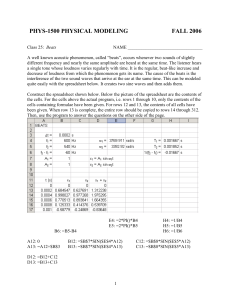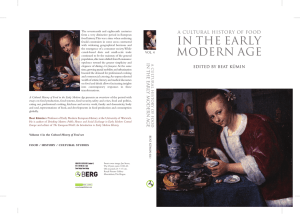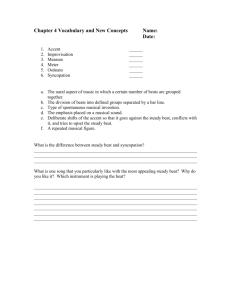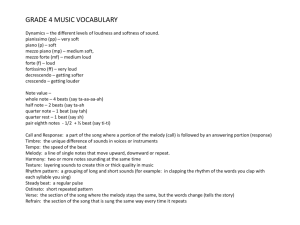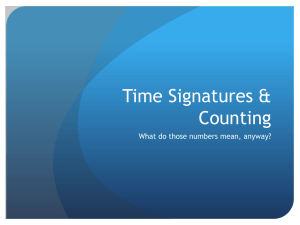PHYS-1500 PHYSICAL MODELING ...
advertisement
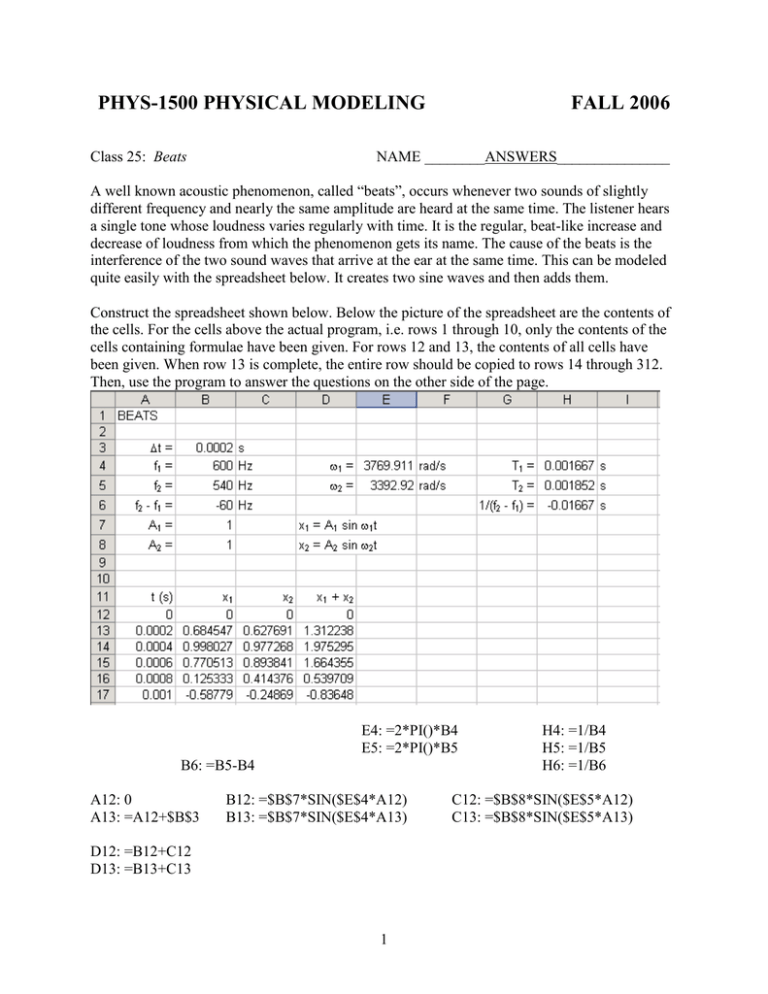
PHYS-1500 PHYSICAL MODELING Class 25: Beats FALL 2006 NAME ________ANSWERS_______________ A well known acoustic phenomenon, called “beats”, occurs whenever two sounds of slightly different frequency and nearly the same amplitude are heard at the same time. The listener hears a single tone whose loudness varies regularly with time. It is the regular, beat-like increase and decrease of loudness from which the phenomenon gets its name. The cause of the beats is the interference of the two sound waves that arrive at the ear at the same time. This can be modeled quite easily with the spreadsheet below. It creates two sine waves and then adds them. Construct the spreadsheet shown below. Below the picture of the spreadsheet are the contents of the cells. For the cells above the actual program, i.e. rows 1 through 10, only the contents of the cells containing formulae have been given. For rows 12 and 13, the contents of all cells have been given. When row 13 is complete, the entire row should be copied to rows 14 through 312. Then, use the program to answer the questions on the other side of the page. E4: =2*PI()*B4 E5: =2*PI()*B5 B6: =B5-B4 A12: 0 A13: =A12+$B$3 B12: =$B$7*SIN($E$4*A12) B13: =$B$7*SIN($E$4*A13) D12: =B12+C12 D13: =B13+C13 1 H4: =1/B4 H5: =1/B5 H6: =1/B6 C12: =$B$8*SIN($E$5*A12) C13: =$B$8*SIN($E$5*A13) Create two graphs from your model. The first should be a graph of x1 + x2 as a function of time, and the second should contain separate plots of x1 and of x2 vs. time on the same graph. Start with all the values as they are given on the printout of the spreadsheet on the other side of the paper. 1. Your graph of x1 + x2 vs. t should show the amplitude varying with time. How long does one “beat” last? How many beats per second would be heard? That is, what is the beat frequency? (Hint: frequency equals 1/period.) Tbeat = ______0.01667 s____ units fbeat = ________60 Hz_____ units 2. Now change f2 to 550 Hz, but leave everything else the same. How long does one “beat” last? What is the beat frequency? Tbeat = ________0.020 s____ units fbeat = ________50 Hz_____ units 3. Now change f2 to 570 Hz, but leave everything else the same. How long does one “beat” last? What is the beat frequency? Tbeat = _______0.0332 s____ units fbeat = ______ 30.1 Hz_____ units 4. Now change f2 to 640 Hz, but leave everything else the same. How long does one “beat” last? What is the beat frequency? Tbeat = ________0.025 s____ units fbeat = ________40 Hz_____ units 5. From your data, what relationship can you deduce between the beat frequency and the frequencies of the two component signals? The magnitude of beat frequency equals the difference between the frequencies of the two component signals. 2 6. Now, set f2 equal to 550 Hz again, and change t to 0.0001 s. Examine the graph that shows both x1 and of x2 vs. time. What is the relationship between x1 and x2 when x1 + x2 is a maximum? What is the relationship between x1 and x2 when x1 + x2 is a minimum? They are in phase at the maxima and 180° out of phase at the minima. 7. Set A2 = 2, and leave A1 = 1. Change nothing else. Does this set of conditions still produce beats of some sort? What is different about the graph of x1 + x2 vs. time? They still produce beats, but the minimum is not zero. 8. Open the spreadsheet “SHMDRIVN.XLS”, and go to sheet 2, “LCR Circuit”. Enter the values shown below. t = 1.00E-05 q0 = 0.00E+00 i0 = 0.00E+00 = 60000 E1 = 0 E2 = 10 C = 1.00E-06 1/C = 1000000 L = 4.00E-04 R = 0.1 = 50000 i (max) = 2.7987555 T = 0.0001257 f = 7957.7472 s C A rad/s V V F F-1 H rad/s A s Hz The graph of q vs. t should show a “beat” pattern. What two signals are beating? Does the beat frequency obey the rule that you deduced in part 5? The natural oscillation of the system is beating with the driving signal. The measured beat frequency equals about 1590 Hz, which is equal to the difference between the two frequencies. f = /2 3
